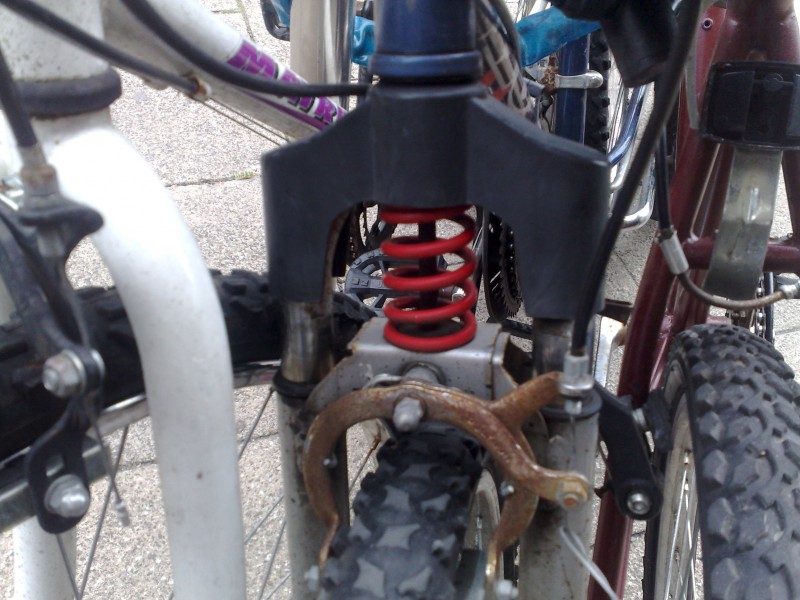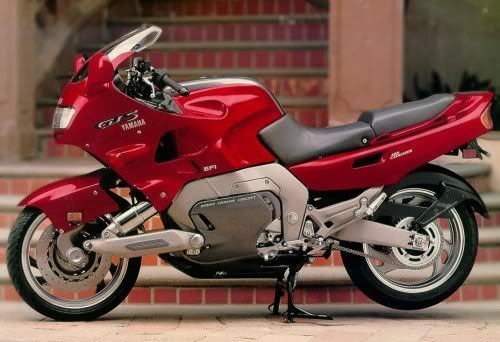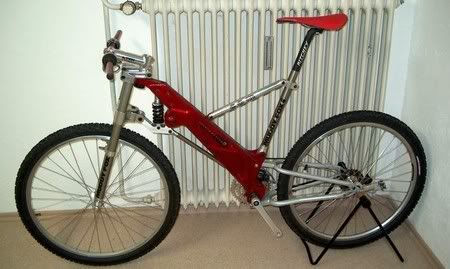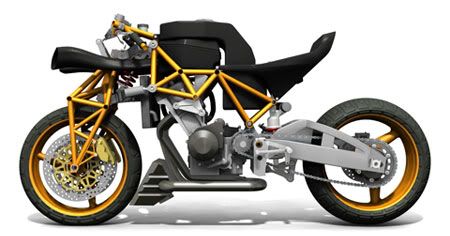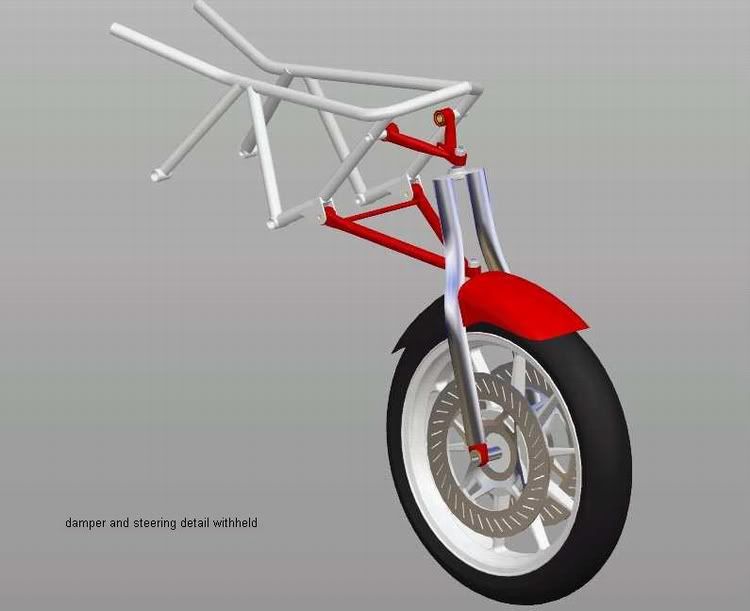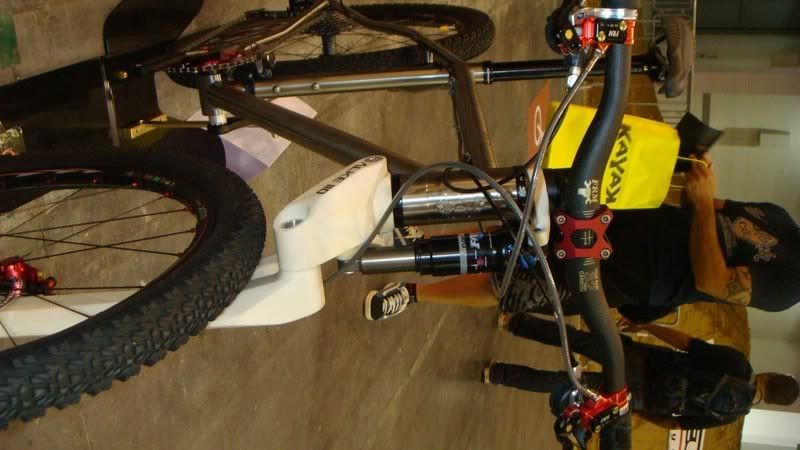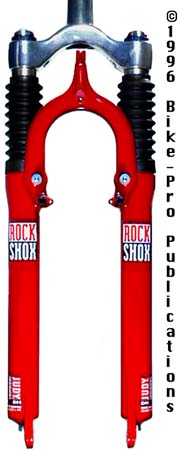More examples:
http://www.ridemonkey.com/forums/showpost.php?p=2461543&postcount=368
Both were sold as far as I am aware of. Not really downhill though.
http://www.ridemonkey.com/forums/showpost.php?p=2461543&postcount=368
Both were sold as far as I am aware of. Not really downhill though.


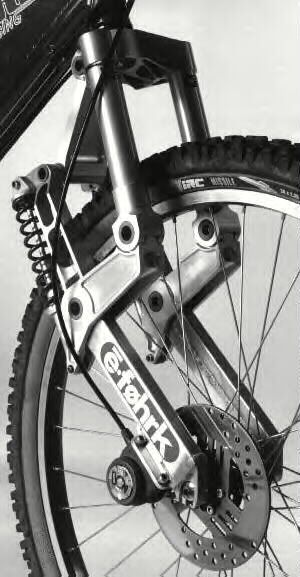

 ). This characteristic is absolutely achievable with a "floating brake" for a tele fork though, which IMO would combine the benefits of a telescopic fork (existing advanced structure, well-established spring and damping rates, familiar handling geometry and dynamics) with the main dynamic benefit of a linkage fork (anti-dive characteristics)
). This characteristic is absolutely achievable with a "floating brake" for a tele fork though, which IMO would combine the benefits of a telescopic fork (existing advanced structure, well-established spring and damping rates, familiar handling geometry and dynamics) with the main dynamic benefit of a linkage fork (anti-dive characteristics)
